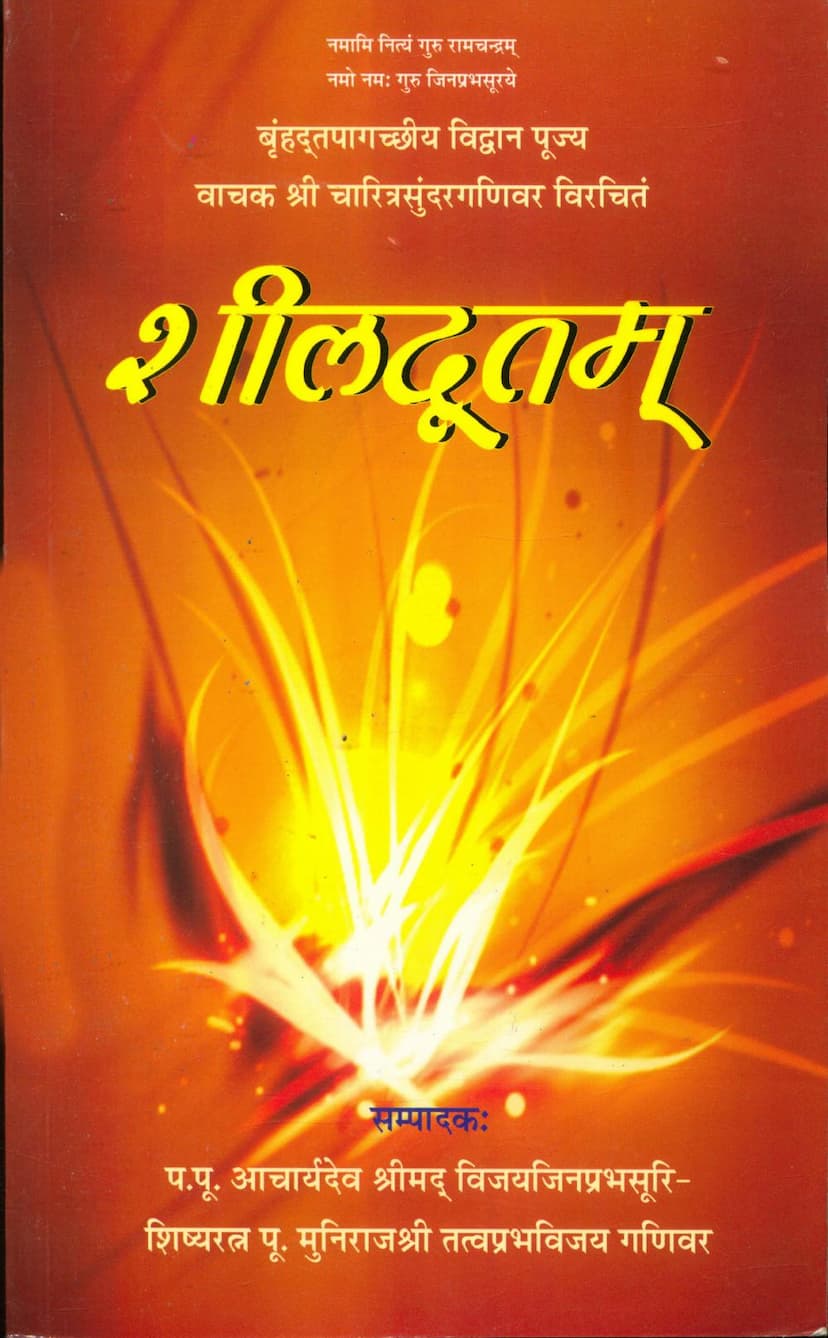Shildutam
Added to library: September 2, 2025

Summary
This document is an excerpt from the Jain text Shildutam (also referred to as Sthulabhadra Charitra), authored by Charitrasundargani and edited by Tattvaprabhvijay. It was published by the Jinprabhsuri Jain Granthmala.
The provided text appears to be the introductory and initial chapters of the work, focusing on the life and teachings of Shri Sthulabhadra, a prominent Jain monk.
Here's a breakdown of the key elements and themes:
I. Dedications and Acknowledgements:
- The text begins with reverential salutations to spiritual gurus: "Namami Nityam Guru Ramachandram" and "Namo Namah Guru Jinprabhsuraye."
- It acknowledges the author, Pujya Vachak Shri Charitrasundargani, and the editor, Pujya Muniraj Shri Tattvaprabhvijay, a disciple of Acharya Shri Vijaya Jinprabhsurishwarji Maharaj.
- The publisher, Pujya A. Bh. Shri Jinprabhsurisuri Jain Granthmala in Ahmedabad, is also recognized.
II. Background of Shri Sthulabhadra:
- Page #4 provides biographical details about Shri Sthulabhadra:
- Birthplace: Pataliputra (present-day Patna).
- Father: Shakatala, a minister to the ninth Nand king.
- Mother: Lachhildevi.
- Brother: Shriyak.
- Sisters: Yaksha, Yakshadinna, Bhuta, Bhutadinna, Sena, Vena, and Rena.
- Clan: Nagar Brahmin.
- Gotra: Kashyap.
- Lifespan: 99 years, 5 months, and 5 days.
- He was a prominent figure in Jainism, serving as a "Yugapradhan" (leader of an era) for 45 years and possessing knowledge up to 14 Purvas (ancient Jain scriptures).
III. The Narrative of Shildutam:
The core of the provided text is the beginning of the narrative, likely depicting Sthulabhadra's spiritual journey.
-
Theme of Renunciation (Vairagya):
- The text describes Sthulabhadra (referred to as "Bhaddraya Sthulabhadrah") enjoying worldly pleasures with a courtesan named Koshya.
- Upon hearing of his father's death, he experiences a sense of renunciation ("Jata Sanvega Ranga").
- He seeks refuge in serene ashrams on Ramgiri mountains.
-
Meeting with the Guru:
- Sthulabhadra, with his mind focused on Jin meditation, encounters his guru, the Shruta Kevali Bhadrabahu.
- The guru is described in profound terms, implying a deep spiritual state and insight.
-
Guru's Teachings:
- The guru advises Sthulabhadra to conquer desire and attachments, emphasizing that sorrow arises even from proximity to loved ones and intensifies with separation.
- Sthulabhadra expresses gratitude for the guru's teachings and acknowledges his own past ignorance and worldly entanglement.
-
The Temptations of Koshya:
- The text then shifts to the perspective of Koshya, the courtesan, who is deeply attached to Sthulabhadra.
- She laments his renunciation and tries to persuade him to return to worldly life and his position as a minister.
- She employs elaborate descriptions of the city of Pataliputra, its beauty, and the comforts of worldly life to entice him.
- Koshya appeals to his sense of duty towards his family, the prosperity of the city, and even the pleasures of the senses through vivid imagery of nature, music, and romance.
- She highlights the transient nature of worldly life and the superiority of eternal spiritual bliss, but frames it in a way that encourages him to enjoy the worldly pleasures he is capable of.
-
Sthulabhadra's Steadfastness:
- Throughout these temptations, Sthulabhadra remains firm in his spiritual resolve, often reiterating the teachings of his guru and the ephemeral nature of worldly pleasures.
- He emphasizes the ultimate goal of liberation (moksha) and the purity of the Jain dharma.
-
Literary Style:
- The text employs sophisticated Sanskrit poetic meters (vrittas) such as Shikharini, Mandakranta, Shardulavikridita, and Vasantatilaka, indicating a high level of literary artistry.
- The language is rich with metaphors and similes, drawing parallels from nature, mythology, and everyday life to convey spiritual concepts and emotional states.
IV. Editorial and Publishing Information:
- The publisher is Jinprabhsuri Jain Granthmala, Ahmedabad.
- The first edition was printed with 1000 copies.
- The price is mentioned as 50-00.
- The publication date is "Samvat 2068, Poush Shukla 13."
In essence, this section of Shildutam serves as an introduction to the character of Sthulabhadra, his pivotal moment of renunciation, his encounter with his spiritual mentor, and the subsequent efforts by a devoted courtesan to draw him back into worldly pleasures, against which Sthulabhadra maintains his spiritual discipline and commitment to Jain principles. The narrative skillfully portrays the internal struggle between worldly attachments and spiritual aspiration, characteristic of many Jain biographies.